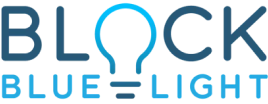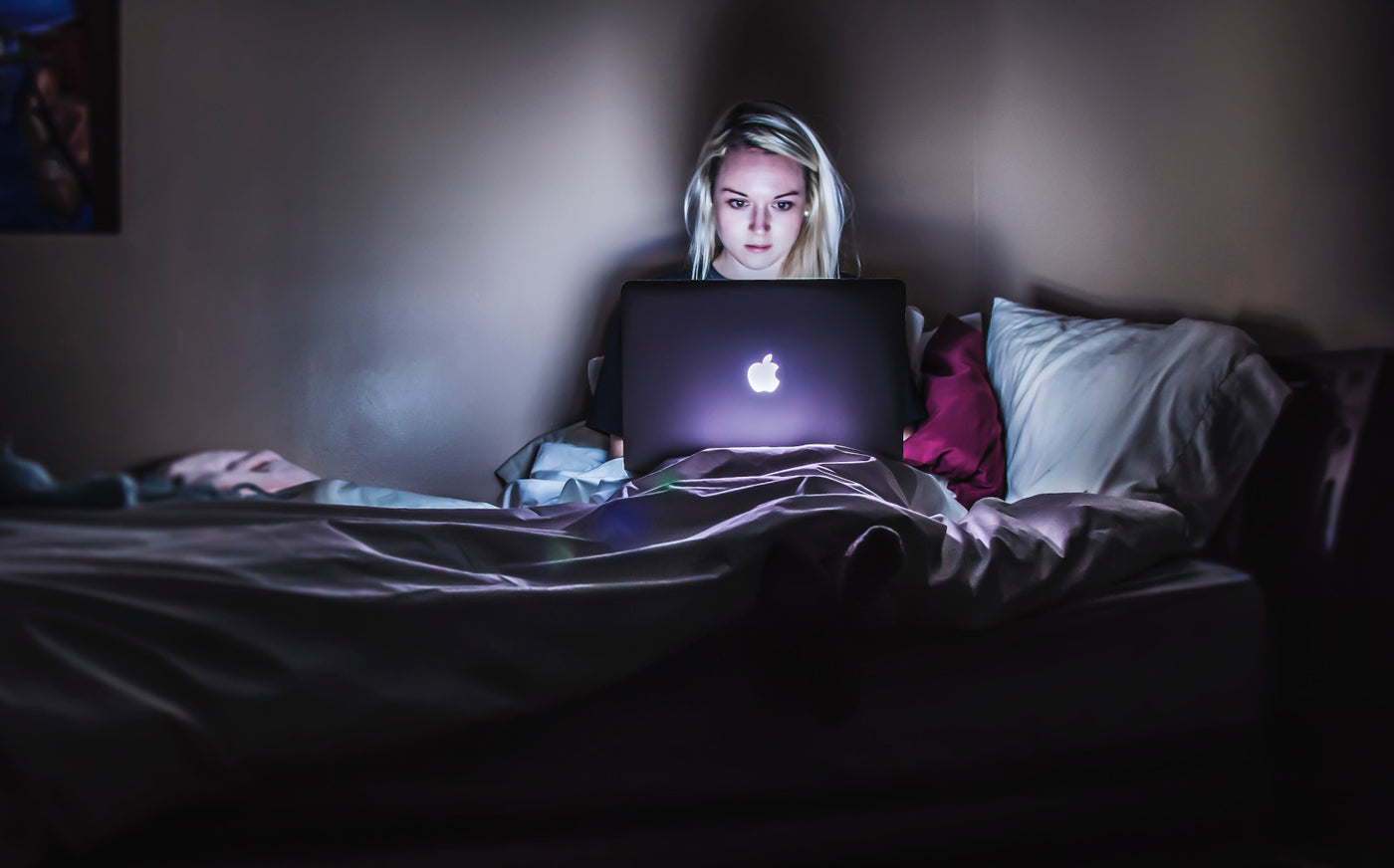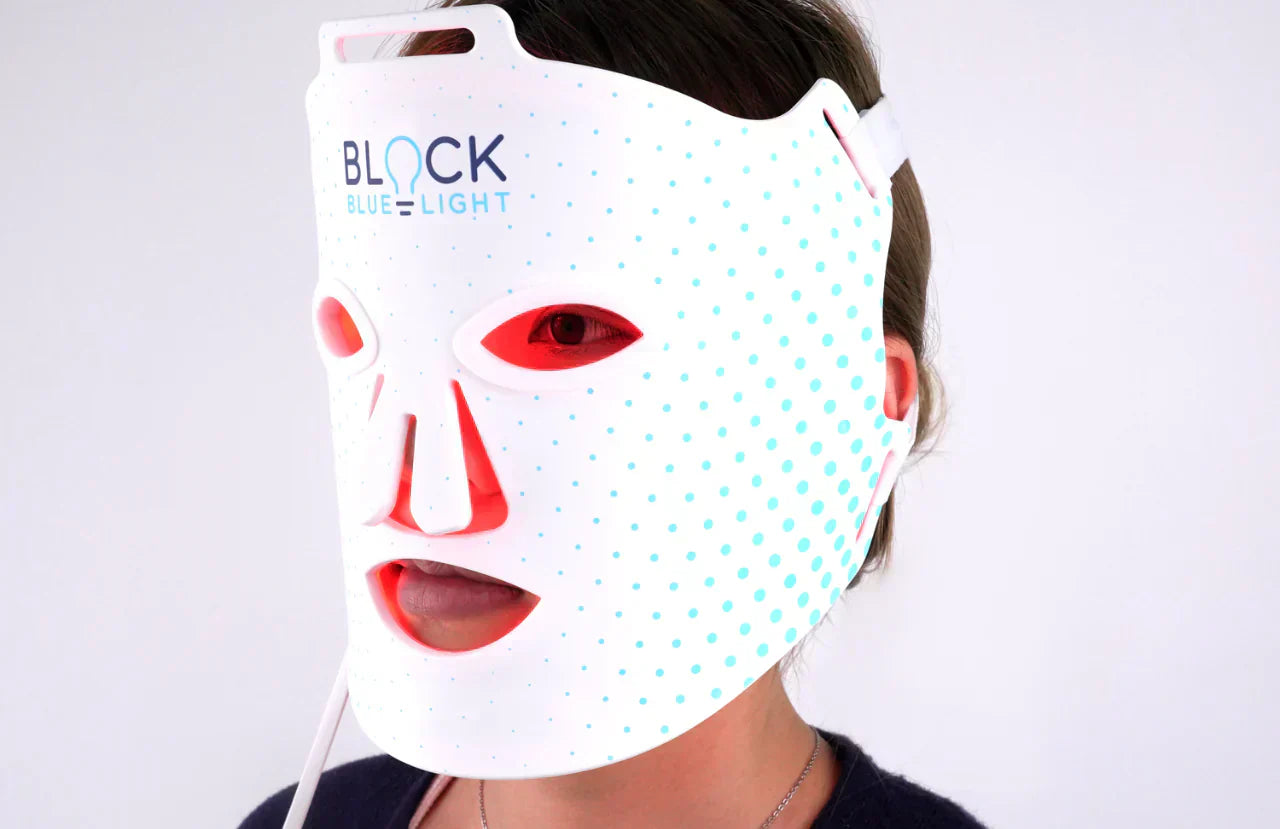We know what blue light is and how it can affect our mood and sleep patterns- scientists and doctors have been preaching about the detriments of artificial blue light and how to avoid them for many years now.
But why does blue light wake you up and how exactly blue light wakes you up are still questions that most people don’t have a clear answer to.
Continue reading to find out why light has the strongest effect on not only your sleep patterns but also your mood patterns, energy levels and hunger levels.
But first, for those of you who don’t know what exactly blue light is and how it works, here is a short overview:
Blue light is one of the colours of light present in the visible light spectrum.
White light, sunlight and the light from yellow bulbs contain the full spectrum of colours (that you see in the rainbow.) It contains red, orange, yellow, green, blue, indigo and violet wavelengths. The colours/wavelengths toward the end of the spectrum (green, blue, indigo and violet) carry the most energy.

Does blue light wake you up?
Yes, when blue light enters our eyes, it stimulates cells containing melanopsin at the back of our retina. These cells signal to the brain that it is daytime. The brain responds by altering body functions to promote wakefulness- reducing melatonin secretion, constricting the pupils and increasing daytime hormones such as cortisol.
This discovery is fairly new. Previously scientists had discovered only two kinds of cells in our retina (You may remember studying about rod and cone cells in your science class!) Rod cells help us see in the dim light and cone cells enable us to see colour. In 2000, a new class of light-sensitive cells was discovered, called ‘intrinsically photosensitive retinal ganglion cells’ or ipRGCs for short. These cells have nothing to do with our vision. They contain the substance melanopsin that we talked about above. They absorb light only to regulate our sleep-wake pattern and other circadian rhythms.
How blue light wakes you up
Blue light is a Zeitgeber. [1] This is just a fancy German term used for any cue which maintains our 24-hour body-clocks or circadian rhythms. A circadian rhythm is any biological process that repeats itself every 24 hours.
In our body, most of our biological processes, such as heart rate, body temperature, digestion, moods and sleep occur on a 24-hour clock.
For example,
- Our body temperature is higher in the evenings than in the morning
- We feel usually hungry at fixed times during the day
- We tend to get sleepier as the day goes on

However, these 24-hour patterns (circadian rhythms) can get affected by external cues or zeitgebers. They can be affected by sound, temperature, exercise and light. Light is the strongest external cue.
For example, in the mornings, if someone opens the curtains earlier than usual, the blue light wakes us up.
Similarly, in winters, when it becomes dark earlier, we tend to become more sleepy earlier than in the summers. This is due to the absence of blue light.
These zeitgebers or external cues are very important for good health.
If they are disturbed, they have a negative impact on our mood and body functions. For example, people with depression have disturbed sleep-wake cycles, cortisol levels and temperature levels.
Stressful life events can disrupt normal biological cycles. This can cause disturbances in normal sleep cycles and hunger patterns. If this happens, you can treat the disturbance by reordering the rhythms back to their natural state.
You can do this by changing the external environment. Blue light therapy is the best example of this.
In fact, research conducted last year at the Korea Advanced Institute of Science and Technology has proven that early-morning exposure to blue light wakes us up and can help overcome morning drowsiness. The researchers provided an hour of blue light exposure to university students and then measured their physiological response. Melatonin levels were significantly lower in the students who received blue light exposure. [2]
The science behind how blue light wakes us up
The iPRCG cells in our eyes which contain Melanopsin are directly responsible for conveying information on blue light to our brain. They are separate from rod and cone cells which help us see colour and objects.
That is why blue light wakes up even individuals who are blind!
Melanopsin is most strongly affected by short wavelengths of around 480 to 550 nanometers. This is the wavelengths of blue light and to some extent green light too.
Previously, only blue light was thought to affect melanopsin, but new research revealed that short frequencies of green light has an equally strong effect.
That is why any blue light blocking glasses that you wear must target the full frequency range of 400-550nm for them to be effective.
When light of this frequency enters our eyes, it triggers the melanopsin in the iPRCG cells and creates an electronic signal. These signals travel to our brain and our brain acts in response. The signals are transmitted to the SCN or suprachiasmatic nucleus of the hypothalamus. The SCN is called the Master Clock of the brain because it maintains our biological cycles according to the sunrise and sunset. [3]

How blue light wakes up our minds
Scientists have conducted many studies on the effects of Melanopsin on the brain. As it turns out, when activation by blue light, not only wakes us up from sleep but drives cognition too. [4]
A study was conducted at a Belgium research institute to see the role of Melanopsin in our brain’s cognition. MRI scans were done on volunteers’ brains, while they performed a working memory task, whilst being exposed to blue or green light. Regions of the brain involved with memory were more active when exposed to blue light.
This shows us that exposure to natural blue light in the morning can help wake our minds by improving cognition and short-term memory.
How blue light controls sleep-wake patterns
Melanopsin has two states;
- A deactivated state caused by orange/red light in which it is sensitive to blue light
- An activated state in which it produces electrical signals
During the evening, we are naturally exposed to orange/red light from the sunset. We are not naturally exposed to any blue light. During this period, melanopsin becomes deactivated. It stops producing electrical signals and the brain promotes sleep.
In the morning, the blue light (from sunlight) wakes us up by reactivating the melanopsin to produce electrical signals. The brain responds to these signals and promotes wakefulness.
In this way, blue light controls our sleep-wake patterns.
How to avoid blue light waking you up at night
Now we know more about how blue light wakes us up, here are some simple ways to avoid the disruptive effects of blue light and ensure your sleep is deep and restful:
100% Blue and Green Light Blocking Glasses at night
Use Blue Light Glasses that block 100% of blue and green light from 400-550nm after sundown to ensure you have maximum levels of the sleep hormone melatonin which promotes restful sleep. The absence of blue and green light puts melanopsin in its deactivated state and signals to your brain to promote sleep.
100% Light Blocking Sleep Mask
Often bedroom environments are not pitch black at night due to light pollution coming through the windows from streetlights, neighbouring houses, and headlights. Even a small amount of artificial light in the bedroom at night, will pass through the eyelids, lower melatonin levels and therefore reduce deep and REM sleep.
Blue Light Free Lighting Products
The biggest source of blue light in our environments is the conventional lighting we use in our homes. Our skin also has the same melanopsin receptors as our eyes, therefore blue light from house-lighting at night also impacts circadian rhythm and sleep quality. Using lighting solutions which have blue light eliminated is the best solution. You can browse through blue light-free bulbs, amber book lights, sleep lamps, red night-lights, and motion night-lights.
Daytime Blue Light Computer Glasses
During the daytime we are exposed to concentrated levels of blue light from screens, devices, and lighting. Using daytime computer glasses which target and filter the harmful blue light (at the 455nm range) by 50% will ensure you’re still receiving the beneficial wavelengths of blue light which are responsible for energy, positive mood, and motivation. You will still be protected from the harmful wavelengths which cause eye damage, headaches, and sore eyes. Reducing your blue light exposure to healthy levels during the day will also provide benefits at night when winding down for sleep.
References:
Choi, K., Shin, C., Kim, T., Chung, H. J., & Suk, H. (2019). Awakening effects of blue-enriched morning light exposure on university students’ physiological and subjective responses. Scientific Reports, 9(1). doi:10.1038/s41598-018-36791-5
Hughes, V. (2014, March 13). How Light Wakes Up the Brain. Retrieved October 19, 2020, from https://www.nationalgeographic.com/science/phenomena/2014/03/13/how-light-wakes-up-the-brain/
Melanopsin. (2020, October 12). Retrieved October 19, 2020, from https://en.wikipedia.org/wiki/Melanopsin
Zeitgeber. (2020, September 05). Retrieved October 19, 2020, from https://en.wikipedia.org/wiki/Zeitgeber









